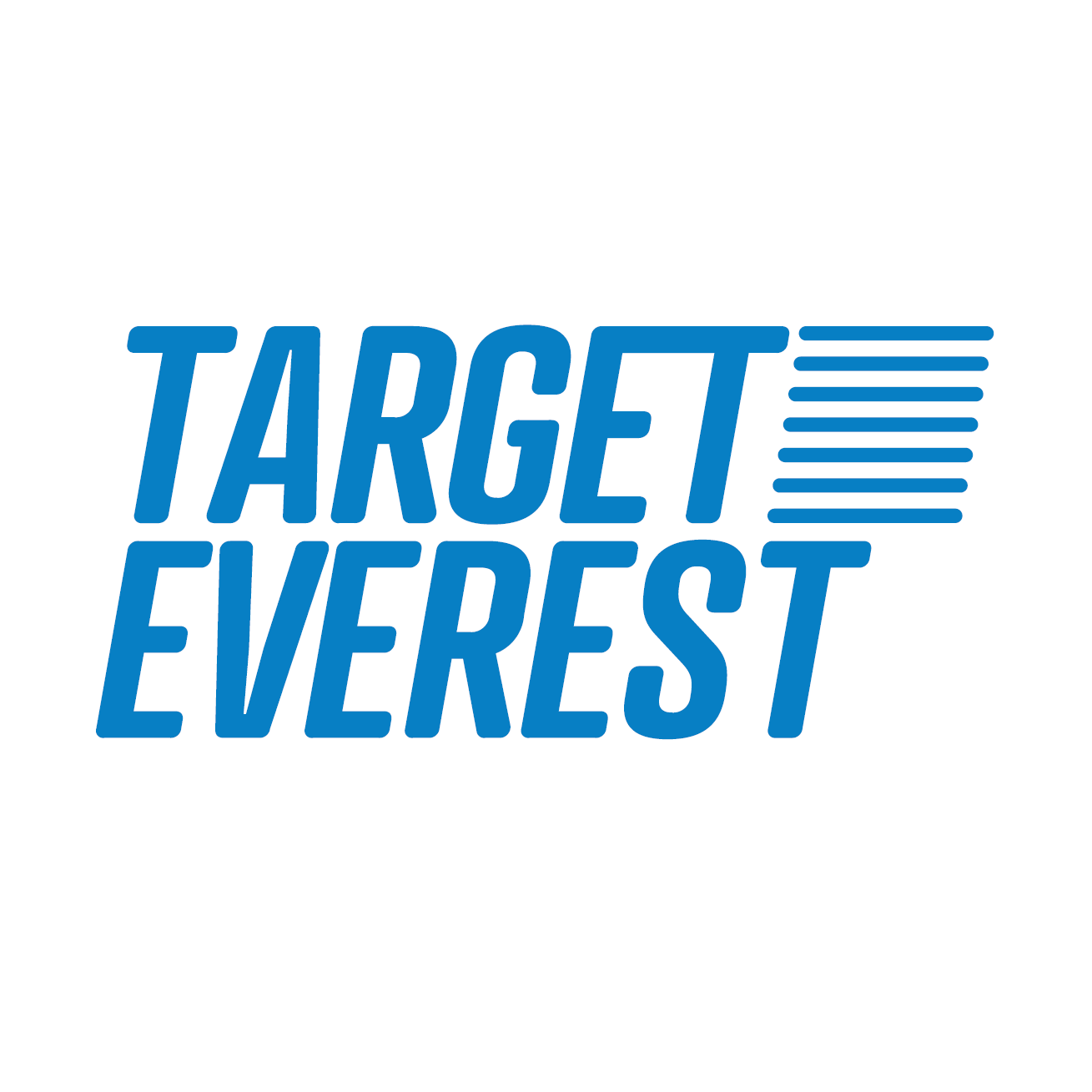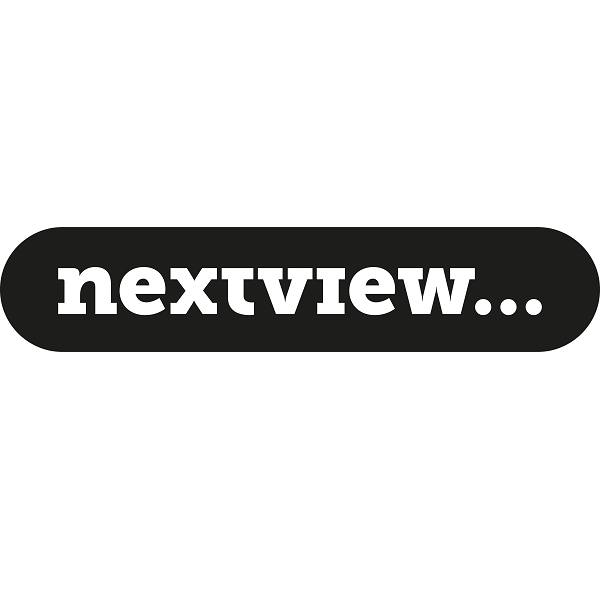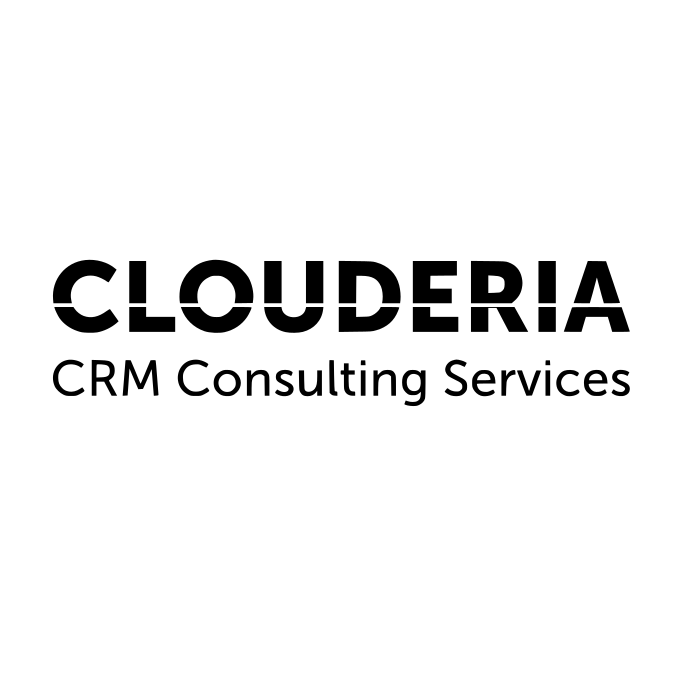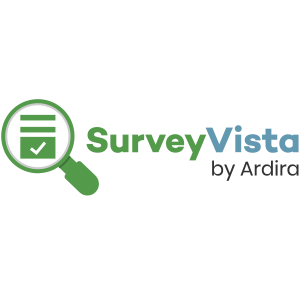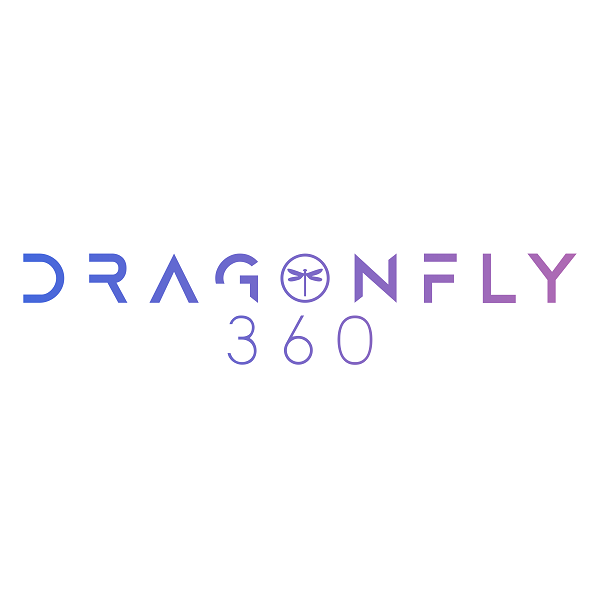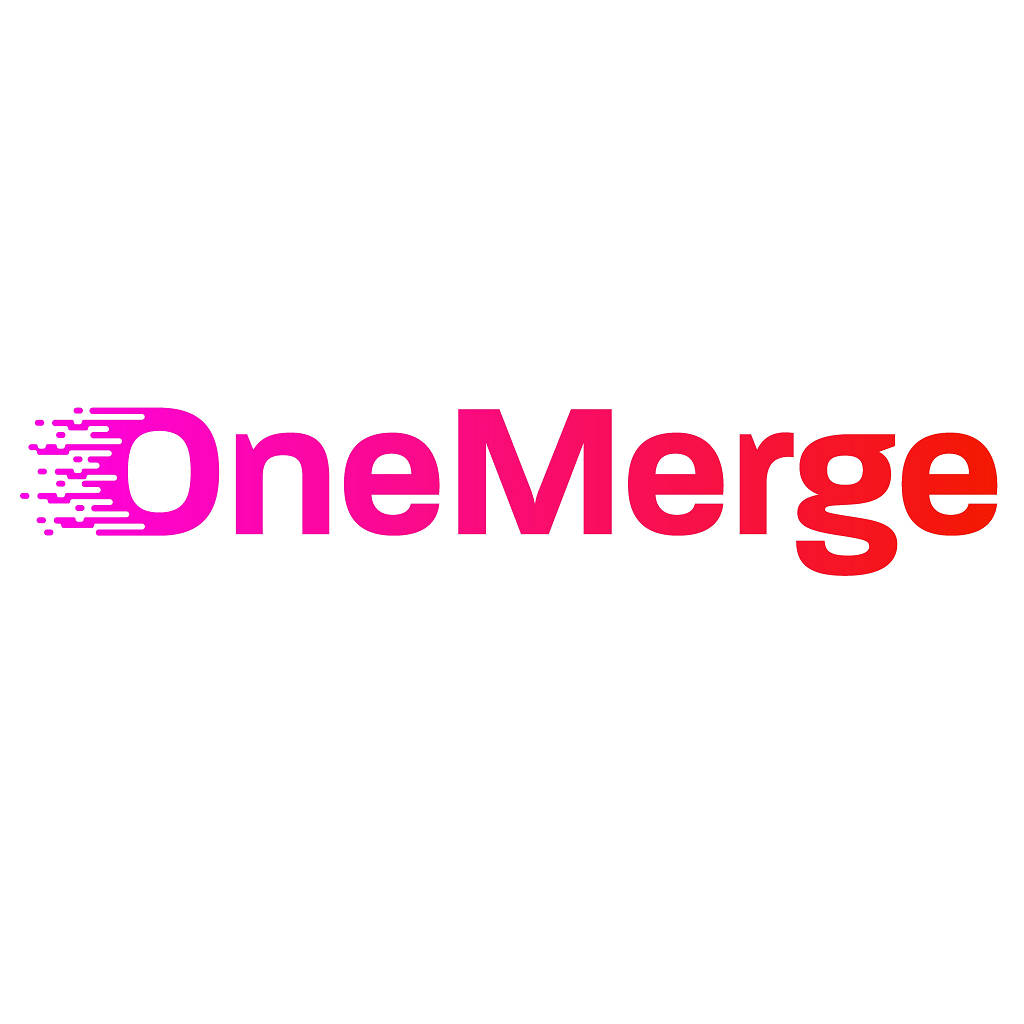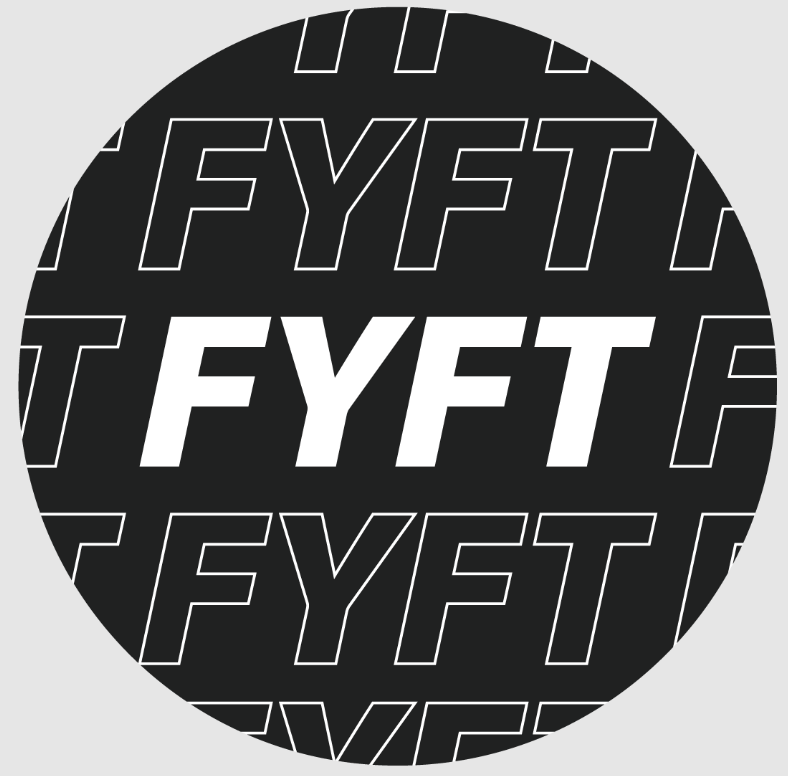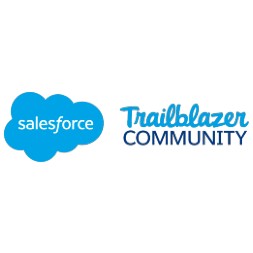- 2024-05-17 : 8 AM to 7 PM
- Venue: Prague Congress Centre, Vysehrad, Prague
Why to attend CzechDreamin in 2024?
It is getting closer, so we prepared a few reasons why you should attend if you just don’t want to…
Where to stay
You are coming to Prague for the first time and have no idea where to stay. Don’t worry, we have…
CzechDreamin 2023 Summary
480+ paid attendees from all over the world; 37 sessions; 10 % admins, 16 % business users, 26 % developers,…
Program Schedule
- All
- Panorama Hall
- Klub B - Architects
- Klub A - General
- Klub D - Marketers
- Klub E - Developers
- Klub C - Consultants
8:00
The doors will open. Coffee & tea ready to put you up to speed, you already had your breakfast at home or in the hotel. Time for catch-up with friends or get a new friends.
Swags for the quickest, sponsors full of energy as well.
8:45
Everyone ready for the welcome words, already seated in the main room. We cannot wait to see you and have a selfie with you.

9:00
Keynote, Domenique Sillett Buxton
When I joined Salesforce I was the sole creative on the Developer Marketing team. We were a small group yet passionately committed to building a community of makers, dreamers, and doers. No sales talk. Just purpose and inspiration. And then we made Astro, built Trailhead, and the amps went up to 11. And this thing called Trailheart happened because our community and our company said YES. In that order.
9:45
Quick break. The quickest will be able to grab another tea & coffee, visit sponsors to get additional stamps to the collection for the raffle at the end of the day. And quick chat with friends before each of you will run into different room.

10:00, Klub C
Intricacies of data access – How can I make them see it?, Svata Sejkora (@SvataSejkora), 201 level
Have you ever struggled with figuring out how to share certain data to your internal users or to your external users in the most simple way? Have you ever wondered what are the capabilities of the platform both point and click and code based and what are their limitations?
If that is the case, or you are trying to understand the platform, this session is perfect for you. We will go through known, less known, and fringe options how to share data on our beloved platform.
As I love interactive session (and believe you too) we will start with a business requirement. Then, we will have 45s to name the Salesforce feature, best suited for the job. Afterwards, I’ll guide you through the “best” solution (a subjective one) and explain it fully, providing details why I believe it is the best one.
Hold your breath, as there is enough features for full 50 minutes session.
To mention few we will go through:
- Sharing Set
- Sharing Group
- Account Relationship
- ACR
- Apex Sharing

10:00, Klub B
Maximizing Data Security with Salesforce Event Monitoring and Analytics, Akram Faris & Loutfi Aliluch, 201 level
In today’s digital landscape, safeguarding sensitive data is paramount for any organization. In this presentation, we will delve into the comprehensive capabilities of Salesforce Event Monitoring to monitor, prevent, and mitigate threats to sensitive data. We will explore the various facets of event monitoring, including its integration with event monitoring analytics and setup audit trail data, providing invaluable insights into user and organizational behavior.
Furthermore, we will showcase the event monitoring app—a built-in solution within Salesforce designed for effortless exploration of monitoring data. With its intuitive interface, prebuilt dashboards, and datasets, attendees will discover how easy it is to identify suspicious behavior, analyze page performance, and enhance user adoption.
Attendees will gain practical knowledge on setting up the event monitoring app and leveraging its features effectively. Through a quick demo, we will illustrate how organizations can harness the power of Salesforce Event Monitoring and Analytics to fortify their data security measures and ensure compliance with regulatory standards. Join us to empower your organization with proactive data protection strategies.

10:00, Klub E
a REST call, a Wired adapter and Graphql walks into a bar…, David Fernandez Rivero (@DFdezR), 201 level
Brace yourselves for a data-driven session where a REST call, a Wired Adapter, and GraphQL hilariously waltz into a bar. With Salesforce offering more tools than a handyman’s toolbox, choosing the right data retrieval method can feel like trying to pick the right flavor in an ice cream shop with too many choices. Join me as we decipher the punchlines to when, where, and why to opt for each method, making your processes more efficient and secure. By the end, you’ll not only have a good laugh but also know which best practices to follow, ensuring your data-fetching journey is both entertaining and enlightening.
Don’t miss the chance to discover the comedy gold hidden in the realm of Salesforce data retrieval!

10:00, Klub D
Tips and tricks for SSJS Development, Filip Boštík, 201 level
Discover practical insights into Salesforce Marketing Cloud development, specifically focusing on Server-Side JavaScript (SSJS). In this session, I’ll share tips and tricks to improve efficiency, code quality and security. Join me as we explore a set of tools, both within SFMC and in Visual Studio Code, designed to enhance your development experience. Let’s dive into the world of SSJS together and uncover ways to streamline and elevate your coding practices.

10:00, Klub A
SOQL 201 for Admins & Developers: Slice & Dice Your Org’s Data With Aggregate Queries, Neil Hohmann, 201 level
Already know how to write a basic SOQL query? Great! But what about an *aggregate* SOQL query? You know, the kind that uses aggregate functions like COUNT & MAX along with GROUP BY and HAVING clauses? No? Well, get ready to learn how to slice & dice your org’s data right inside your own dev console. From finding duplicate records to prototyping summary & matrix reports, learn the ins and outs of aggregate queries during this fast-paced but admin-friendly session on advanced SOQL concepts.

10:30, Panorama Hall
Flow Engineering: helping your organization overcome disengagement, disorientation, and distraction, Andrew Davis (@AndrewDavis_io), workshop
Humans evolved to be awesome. But stick us in a big bureaucratic organization and it’s easy for us to become slow and clumsy. How can we recapture our amazing potentiality to be inspired, to understand what’s happening, and to operate in a flow state?
Flow Engineering is a way of improving team performance through fun, gamified exercises. We’ll look at how to get the team clear on the big picture, how everyone’s work fits together, and how to dive deep into performance improvements.
This interactive session will introduce the basics of Flow Engineering so you feel comfortable getting started and learning more.

11:00, Klub E
Maximizing Collaboration: Managing Slack Channels with Salesforce Flow, Aaron Crear (@AaronCrear), 201 level
Unlock the full potential of Slack and Salesforce by seamlessly integrating them through Flow automation. In this interactive demonstration, discover how to leverage Flow to create, manage, and optimize Slack channels for enhanced project management efficiency. Learn step-by-step procedures to dynamically create channels, add members, distribute messages, and archive channels—all triggered by Salesforce records. Gain practical insights and real-world examples to streamline communication and collaboration, empowering your teams to achieve greater productivity and success.

11:00, Klub A
Customer Journey Mapping: The Secret Sauce for Salesforce Success, Sarah Kelleher (@SarahKllhr), 101 level
Customer Journey Mapping aligns teams, promotes innovation, focuses strategy and defines objectives. What’s not to love? This session will explore why this is such a powerful tool and how businesses can use it to their advantage.
When you’re in the depths of a Salesforce project or busy managing day-to-day admin, it’s easy to forget that the customer should be at the heart of your strategy. If you’re not seeing ROI from Salesforce, struggling with adoption, missing your quarterly targets or lacking alignment in your teams, Customer Journey Mapping might just be your golden ticket. Taking a step away and bringing it all back to the customer can breathe life back into your org and revitalise your teams.

11:00, Klub D
Uncovering the Hidden Power of Browser Extensions for SFMC, Dmitrii Averin & Felipe Romero, 201 level
As digital marketing continues to evolve, the need for innovative tools to streamline processes and enhance user experiences becomes increasingly evident. Browser extensions offer a unique opportunity to bridge the gap between the Marketing Cloud platform and users’ browsing environments. Through a comprehensive analysis of Marketing Cloud integrations and tools, this study aims to uncover the untapped potential of browser extensions in optimizing marketing strategies, improving data analytics, and fostering customer engagement.

11:00, Klub B
The Importance of Process-Driven Approach for Good Architecture, Xavery Lisinski, 201 level
Architecting Salesforce solutions is not easy. There are many features and considerations to explore, from data model, to integrations, automations, and security.
However, there is a new approach being championed in the Salesforce community called ‘Process-led design’. Through diligent business process diagramming, business analysts and architects can infer the required data model entities, spot integration needs, identify automation opportunities, and verify required permissions. All technical and functional requirements can be captured upfront and proactively, resulting in effective and lovable solutions.

11:00, Klub C
Unveiling Financial Services Cloud: Best Practices and Insights from Real-World Implementations, Milen Kisov, 201 level
In the bustling landscape of Salesforce industry clouds, one reigns supreme in its significance and impact: the Financial Services Cloud (FSC). Join me in an immersive session where we delve into the heart of FSC, uncovering its best practices and invaluable lessons learnt.
Drawing from a wealth of experiences gained from numerous Salesforce Financial Services Cloud implementations, the aim of this session is to help anyone who is considering or already working with financial services clients looking to implement FSC.
Throughout our time together, we will unravel the intricacies of successful deployments as well as some of the main issues encountered, dissecting key strategies to maximise your chances of success. Whether you’re a seasoned expert or a newcomer to the realm of FSC, this session offers actionable insights tailored to elevate your understanding and approach.
Expect to gain:
- Proven methodologies for seamless integration and adoption of Financial Services Cloud.
- Case studies highlighting triumphs and pitfalls from real-world implementations.
- Strategies for optimising customer engagement and driving business growth.
- Practical tips and tricks to overcome common challenges and maximise ROI.

11:30, Klub A
Behind the Scenes From the Manager’s Chair: Decoding the Secrets of Successful Salesforce Interviews, Hugo Rosario (@hmsrosario), 201 level
Unlock the mysteries of successful Salesforce interviews in this insightful session hosted by Hugo Rosario (Salesforce Customer), a seasoned hiring manager that leads the Salesforce Department of multinational company with over 100 interviews under their belt. Step into the manager’s chair and gain exclusive behind-the-scenes insights into what makes a Salesforce consultant stand out during the interview process.
From deciphering the unspoken cues to mastering key strategies, we’ll explore the intricacies of the interview process and provide practical tips for consultants looking to not only pass interviews but also thrive in their roles. Whether you’re a seasoned professional or just starting your Salesforce journey, this session is your backstage pass to the secrets that hiring managers wish you knew.

11:30, Klub C
Free and Effective: Making Flows Publicly Accessible, Yumi Ibrahimzade, 201 level
Screen flow is a powerful automation tool that is commonly designed for internal and external users. However, what about the guest users? We will dive into various methods of launching screen flows and understand how to make them publicly accessible, extending their usability to a broader audience.
The presentation will also cover the implementation of security layers and highlight best practices for a smooth and protected user experience. Discover the potential of screen flows beyond conventional use and learn how to leverage them effectively.
12:00
Lunch time
Something typical counting with vegetarians and non-vegetarians as well. Beer (might be) included, as well as something sweet to get you ready for the next BIG thing.

13:30, Klub E
The 3 ways of DevOps applied to Salesforce development, Pablo Gonzalez (@pgonzaleznet), 201 level
When we think of Salesforce DevOps, the first things that come to mind are probably Git, sfdx, CI/CD, and deployments. But DevOps is primarily a cultural shift, with technical implementation coming second. Without this understanding, your DevOps implementation could become a group of tools and techniques that don’t drive business outcomes. In this session, we will explore the original DevOps philosophy, known as “The 3 ways”, and see if they make sense in the context of Salesforce development.

13:30, Klub B
Architect’s Guide to Data Modeling in Data Cloud, Melissa Shepard (@lissa_x), 201 level
Explore essential principles of data modeling in Data Cloud, empowering architects with the knowledge to design robust, scalable data solutions. It is important for architects to understand the foundational data modeling concepts when working with the new Data Cloud. It is critical to get this right when first starting with your Data Cloud design. This is a new cloud and with it comes a new architecture for architects to learn and build. Join us to learn data modeling for this modern architecture.

13:30, Klub A
Salesforce Adoption – Metrics, Methods, and Motivation, Antone Kom, 101 level
Explore the core of Salesforce success in ‘Salesforce Adoption – Metrics, Methods, and Motivation.’
We will discuss essential metrics, effective methods to drive adoption, and the driving force behind user engagement and explore strategies for onboarding, training, and continuous support that empower users to navigate the platform seamlessly.
By leveraging these tools, you can effectively measure adoption against your company’s goals and create an environment where users not only adopt Salesforce but actively contribute to its ongoing success.

13:30, Klub D
Lessons Learned: Unveiling Salesforce Data Cloud, Antonin Puskarcik, 101 level
Having a 360 view of the customer is a must. Just get a Data Cloud and voilà, there’s your 360. Now with AI!
It sounds simple, doesn’t it? But putting all the pieces of the 360 view together is challenging. And acting on the data even more.
So, what does it look like when you get hands-on with Data Cloud? In this session, we’ll take a whirlwind tour of its rapid evolution over the past year and glimpse into its exciting future. Then, I’ll unveil the top 5 lessons I learned the hard way while working with Data Cloud. Join me in this session to get valuable insights and confidence in navigating Data Cloud.

13:30, Klub C
Seamless Integration Simplified: Leveraging Swagger for Salesforce Flows Without Apex, Július Hudák & Maroš Sitko, 201 level
Discover the power of simplified integration in Salesforce. “Seamless Integration Simplified: Leveraging Swagger for Salesforce Flows Without Apex” offers a deep dive into using Swagger to define RESTful APIs and integrate them directly into Salesforce Flows – all without writing a single line of Apex code.
This session will guide you through creating Swagger definitions and demonstrate their use in streamlining Salesforce integration, making it accessible for both developers and non-developers. Join us to enhance your Salesforce integrations with efficiency and innovation.
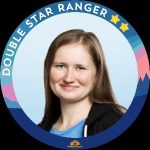
14:00, Klub A
10 Differences between Sales Cloud and CPQ, Blanka Doktorová, 101 level
How to differentiate Sales Cloud and CPQ on first glance might be tricky if you do not know where to look and what to look at. You will know 🙂
Managing the sales process within Salesforce is a common use case that can be managed with standart Sales Cloud. If you want to do entire quoting process you will find out Salesforce CPQ solution exists. What is then the difference if both can handle selling products?
You will see comparison of 10 different features, which Sales Cloud and Salesforce CPQ handle differently.
Simple question you will always remember if you should consider using Salesforce CPQ will be a cherry on top.
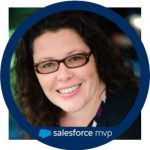
14:00, Klub D
Getting to Grips with AMPScript, Louise Lockie (@LouiseLockie), 201 level
Whether you are a marketeer wanting to produce highly customised and dynamic emails, or a Marketing Cloud administrator supporting a creative marketing team, you may have already hit the limits of the declarative personalisation options in SFMC. Join me to learn the structure and key use cases of AMPScript.

14:00, Klub E
Integrating Telephony Systems with Salesforce: Insights and Considerations, Barbora Sourkova, 201 level
This talk focuses on the practical aspects of integrating various telephony systems with Salesforce, drawing on examples from implementations in the Czech scene. It aims to inform attendees about the spectrum of telephony solutions available, from small to large scale, and their compatibility with Salesforce.
The presentation will highlight key considerations for selecting a telephony provider that integrates smoothly with Salesforce, including important questions to support the decision-making process. It will also discuss methods for integrating existing telephony systems with Salesforce, aimed at companies contemplating or in the process of adopting this CRM platform.
The discussion is designed to provide a straightforward overview of the steps and considerations involved in telephony and Salesforce integration, with an emphasis on functionality, compatibility, and the practical experiences of Czech companies.

14:00, Klub B
Salesforce Implementation as Product Management – the essence of Product Owner, George Avilov (@GeorgyAvilov), 101 level
In the dynamic world of CRM systems, Salesforce stands out as a leader, offering unparalleled customisation and scalability. However, the success of its implementation heavily relies on more than just technical prowess; it requires strategic internal leadership. This presentation delves into the crucial role of the Internal Product Owner in Salesforce implementation.
We will explore the importance of having an Internal Product Owner, a role that transcends traditional project management. Unlike external consultants, an Internal Product Owner brings in-depth knowledge of the company’s culture, processes, change management and business objectives, aligning the Salesforce implementation with the core business strategy.
We will gain a comprehensive understanding of why Internal Product Owners are not just beneficial, but essential for the successful implementation of Salesforce, ultimately leading to enhanced productivity, user satisfaction, and business growth.

14:00, Panorama
Figma Crash Course for everyone: Creating quick mockups using SLDS asset library, Katka Vokrinkova, workshop
This hands-on workshop is designed for all consultants, business analysts, architects, and developers aiming to efficiently deliver high-fidelity prototypes using the most popular design tool and the Lightning Design System (SLDS). We will cover Figma basics, introduce SLDS Figma asset library, and guide participants in creating both static and interactive prototypes with ready-made components.
Stop using Paint, printscreens, or Microsoft Word when you need to design a custom LWC or quickly reshuffle Account record page to have a focused conversation with client. Bring your laptop; a free Figma license is all you need.

14:30, Klub E
Are best practices the best practice?, Lucian Ciobanu (@Lucian_Ciobanu), 101 level
We’ll examine three well-known Apex best practices. As developers, let’s take a look at them with a critical eye, test them to the limit and try to understand if, when and why they make sense.

14:30, Klub A
AI revolution and Salesforce, Jiří Karpíšek, 101 level
We’re living the AI revolution and Salesforce is adapting and bring new value to their customers. Einstein products are evolving rapidly and navigating their limitations, language support, and use cases can be challenging.
Let’s make review of what Einstein product are available currently, what are the capabilities and what can be used for in CEE region and how Rossie.ai can help to learn Salesforce speak Czech. We will explore the Einstein roadmap and I will make a short live demo (based on your vote) of some Einstein feature.

14:30, Klub D
Enhancing Email Campaign Delivery Process in Salesforce Marketing Cloud: A Technical Deep Dive, Hanna Nimchuk, 201 level
Successful email campaigns require both compelling content and a robust technical foundation in Salesforce Marketing Cloud (SFMC). Want to take your SFMC email campaigns to the next level?
This session dives deep into the technical aspects of SFMC to help you optimize your email delivery. We’ll cover everything you need to know, from setting up your infrastructure for peak performance to crafting high-impact email design and managing data effectively for targeted outreach. You’ll also learn how to streamline workflows with Automation Studio and Journey Builder, maximizing your efficiency. Leave equipped with the practical skills to ensure optimal email delivery, design engaging content, and execute targeted campaigns.
This session is ideal for both beginners and mid-level SFMC users looking to boost their email marketing expertise.

14:30, Klub B
Secure the Cloud: Salesforce Integration Security Shindig, JoAnn Culbertson, 201 level
Get ready for the geekiest party in the cloud! Join me for a Salesforce Integration Security Shindig, where we’ll be unraveling the mysteries of securing your Salesforce integrations with a dash of humor and a sprinkle of tech magic. In a world where even your data needs a bodyguard, the session is bound to be the best-dressed event in security!
We will cover:
**Cybersecurity Stand-up Comedy:** Because who said securing integrations can’t be a laughing matter? Brace yourself for some cybersecurity stand-up comedy to keep your spirits high while we lock down your data.
**Best Practices (and Dad Jokes):** Learn the best practices for integration security while also enjoying a curated selection of top-tier dad jokes.
**Q&A Sessions (or Quiz & Anecdotes): Have your burning questions answered during Q&A sessions, where we might throw in a quiz or share amusing anecdotes. Bonus points for the most creative security-related joke!
Don’t miss out on the learning, and a touch of whimsy, at the Integration Security Shindig – where data security meets a good time!

14:30, Klub C
Powerful Start- the Key to Project Success, Barbara Laskowska, 201 level
New customer? New industry? New cloud? New team? A lot to handle!
How to ensure the success of the project? Start it well! I’ve created the 3 areas of focus at the beginning of the project that helped me in multiple roles (BA, PO, and Consultant). Learn from real-world experiences and discover how these insights can empower you to deliver unparalleled value to your customers right from the project’s start.

15:00, Klub C
The 7 Deadly Sins of Project Management: Avoiding Common Leadership Flaws for Success, Pei Mun Lim, 101 level
Projects often fail due to common leadership flaws or what I like to call the 7 deadly sins of project management.
Have you ever worked on a client project that felt doomed from the start? One where the project manager was more interested in their own ideas than in collaboration and teamwork? Or where the team was demotivated by a toxic work environment or a lack of transparency?
If so, you’re not alone and have experienced at least one of the 7 deadly sins of project management. Join us for an illuminating talk where we’ll explore each of these sins in detail, how they can impact project success, and provide concrete strategies for reducing project delays.
Whether you’re a seasoned project manager or new to the field, you’ll walk away with a deeper understanding of how to lead with integrity, empathy, and accountability, and deliver projects that meet or exceed stakeholders’ expectations.

15:00, Klub E
Custom Approval Process: A New Perspective, Pavel Hrbacek (@PavelHrbacek) & Anindya Halder, 401 level
The standard Salesforce Approval process can be limiting in many ways, especially in complex scenarios.
What if there was a way to implement very flexible approvals where one can use Apex code to make data updates in unrelated records, dynamically generate next steps details, and compute assignees on the fly? And still use UI-based configurations to implement concrete approval processes.
In this session, we will share ideas behind such a solution and show a few lines of code to get you started.
15:00, Klub D
Demystifying Cookies: a much easier topic than you think, Fabien Taillon (@FabienTaillon), 101 level
Cookies have been in the news quite frequently in the past years. But what are they exactly ? Are they really linked to security and privacy issues ? They have been featured in the past Release Notes, alongside technical names like Enhanced Domain, SameSite attribute or Third-Party cookies. In this session we will demystify all these terms, seeing that this topic is actually much simpler than you think. After that you’ll never feel uncomfortable talking about cookies.

15:00, Klub A
Equality in the Cloud: Bridging the Gap with confidence, Olga Shirokova & Ekaterina Obolenskaya, 101 level
The presentation addresses the persistent gender imbalance in technology. We will explore the challenges women face, share success stories, and discuss practical strategies to promote gender equality in Salesforce ecosystem. Join us to learn how fostering a diverse and inclusive Salesforce ohana benefits us all and helps build confidence among women in technology.
15:30
Coffee break. Tea break. Sweet break. And something salt as well.

16:00, Klub C
Screen Flows: The Underdog Hero of Salesforce, Chris Taylor, 201 level
Screen flows are often overlooked, but they have the potential to streamline processes, improve data quality and improve user engagement. Join me as we uncover the hidden powers of screen flows and learn how to use them to maximise efficiency and drive business success.

16:00, Klub D
Engaging online workshops: keeping your audience awake, Lukáš Vavřín, 101 level
In the wake of the pandemic, client interactions have shifted from physical spaces to the digital realm, making leading workshops more challenging than ever.
Fear not! This session dives into essential techniques for captivating your audience, stopping them from hypnotizing the ‘Leave’ button.
We’ll explore practical tips, tools, and features that will not only keep your participants engaged, but also simplify your life. From effective note-keeping and collaboration to online whiteboarding and AI “assistants,” we’ll cover it all — with real-life examples!

16:00, Klub B
Integrate with AWS thanks to Unified Developer Experience, Philippe Ozil (@PhilippeOzil), 201 level
Developers and architects, join my session to learn about the native Salesforce Platform features that let you integrate with AWS. You’ll learn about Event Relay and the Salesforce Connect adapters for AWS data sources. I’ll walk you through demos and use cases of the Unified Developer Experience.

16:00, Klub E
Elevate your Flows with Data Fetcher, Skye Tyler (@Skye_force), 201 level
Data Fetcher is a Salesforce Labs Flow component that has the potential to take your screen Flows to the next level. Using SOQL queries to return records without any Get statements can quickly improve the efficiency of your screen flows. But if you add in Unofficial Salesforce Quick Choice component and some formulas for defining your SOQL statements, you have the ability to create reactive data tables that update as users make selections. Join me for a use case where we build a custom, reactive Sort and Filter list of unrelated records.

16:00, Klub A
Navigating EN301549: Compliance and Beyond in European Accessibility Standards, Abdul Haneef Mohamad, 101 level
This session will delve into the specifics of EN301549, focusing on European web accessibility standards and compliance requirements. It will provide insights into meeting these standards and going beyond compliance for enhanced accessibility.
Key Takeaways:
Understanding EN301549 and its implications for web accessibility compliance in Europe.
Best practices, tools, and strategies to align with European accessibility standards within Salesforce.

16:30, Klub B
Optimise Integration with Action Builder, APIs and MuleSoft, Akshata Sawant (@sawantakshata02), 101 level
Discover seamless integration with MuleSoft, APIs, and Action Builder.
Join us to learn how to build and optimize your integration for enhanced connectivity.

16:30, Klub A
Backup solutions: same same but different. Understand which one is best for you, Cyril Louis & Iulian Chiriac, 101 level
Running your business in the Cloud does not mean your data are safe and backed up properly. Oups! Join this session to understand and discover a range of data backup solutions and to learn about their unique features, pricing models, as well as advantages and suitability for different contexts. Please note that we will also address the possibility of backing up Marketing Cloud data (as usually the most of focus is put on Sales/Service Cloud). So join me to find the perfect fit for your organization’s needs 🙂

16:30, Klub D
Don’t just “screenshare”, take your online presentations to the next level, Todd Halfpenny (@ToddHalfpenny), 101 level
Throughout this session, attendees will see how they can use free tools to turn your next Zoom screenshare or Teams presentation into a blockbuster.
We’ll cover how to create and add picture-in-picture scenes, graphics and media, and even live captioning to your online presentations, allowing you to make them more engaging, powerful, accessible, and professional.
If you’re looking to help the migration from zoom-fatigue and death-by-powerpoint, this session is for you.

17:00, Klub A
Solved: perform complex calculations in CRM Analytics and write back to Salesforce, Oleksandr Yevsieiev, 201 level
Regular automation tools like Flows, Triggers are quite flexible in terms of manipulating data in Salesforce. But what if we need to update the record with some external data or with a result complex calculations that combines several sources. CRM Analytics can bridge this gap with point and click way.

17:00, Klub B
“Building Confidence as a Salesforce Architect with Ladies be Architects, Charly Prinsloo, 201 level
One of the biggest obstacles when moving into the architect path is building confidence. Having confidence is a critical part of being a successful architect and is often overlooked. Maybe you have the ideas and knowledge, but don’t know how to apply them. Do you struggle to speak up in key meetings? Or do you want to establish credibility faster? Maybe you need to be able to confidently lead so your team members feel safe with you at the helm. In this session we will talk about ways that you boost your skills and build confidence so that you can achieve success as an architect. We will also go over ways that you can build your skills to boost your confidence.

17:00, Klub C
Lightning Knowledge Base in Salesforce Experience Cloud. Meeting customer expectations and increasing user experience, Yana Pushkar, 201 level
Salesforce Knowledge Base is a potent instrument that gives website visitors, customers, partners, and service agents all the essential information about a business’s product or service. Additionally, it helps get answers to frequently asked questions or helps enhance self-service on a digital portal.
However, in some cases, the OOTB Knowledge base features are not capable enough.
In the session, we will discuss:
- Best practice for building a knowledge base
- The most popular customer requests and ways to implement them
- Tips that help you understand customers’ expectations and gather requirements and so on
- Red Flags that Indicate customer need to enhance their KB

17:00, Klub E
How much is too much? Exploring the extreme edges of scaleability with Scale Testing, Daniel Stange (@stangomat), 201 level
Have you ever wondered how much is too much? When will your Salesforce org falter under the load (or poorly performing implementation), and what will happen?
Salesforce has recently equipped us with Scale Center and Scale Testing Sandboxes, and with these tools, you can find out in details what breaks, and at which points. Join me to learn how I put my org to a trial of fire, and learn how it went. I’m going to share observations on how to actually set up a scale test, how to analyze the outcomes and what to do with the results, and last but not least: Was is able to burn down the house?

17:00, Klub D
Maximizing Business Growth with Account Engagement, Marilo Meta & Raba Mehmeti, 101 level
Join us, in this high-impact session where you’ll discover how to achieve exceptional growth through Salesforce Account Engagement.
Uncover the strategies, best practices, and real-world success stories that can propel your business to new heights. Don’t miss this opportunity to learn from one of the Salesforce community’s trailblazers. Get ready to revolutionize your approach to customer engagement and drive unparalleled growth in your business.
17:30
Closing words
Time to wrap-up.
18:00
Official end of the long day. Whether you still have some energy left or not, we will serve beer, wine and soft drinks.
20:00
We need to be out of the building. Will we continue somewhere?
8:00
The doors will open. Coffee & tea ready to put you up to speed, you already had your breakfast at home or in the hotel. Time for catch-up with friends or get a new friends.
Swags for the quickest, sponsors full of energy as well.
8:45
Everyone ready for the welcome words, already seated in the main room. We cannot wait to see you and have a selfie with you.

9:00
Keynote, Domenique Sillett Buxton
When I joined Salesforce I was the sole creative on the Developer Marketing team. We were a small group yet passionately committed to building a community of makers, dreamers, and doers. No sales talk. Just purpose and inspiration. And then we made Astro, built Trailhead, and the amps went up to 11. And this thing called Trailheart happened because our community and our company said YES. In that order.
9:45
Quick break. The quickest will be able to grab another tea & coffee, visit sponsors to get additional stamps to the collection for the raffle at the end of the day. And quick chat with friends before each of you will run into different room.

10:30, Panorama Hall
Flow Engineering: helping your organization overcome disengagement, disorientation, and distraction, Andrew Davis (@AndrewDavis_io), workshop
Humans evolved to be awesome. But stick us in a big bureaucratic organization and it’s easy for us to become slow and clumsy. How can we recapture our amazing potentiality to be inspired, to understand what’s happening, and to operate in a flow state?
Flow Engineering is a way of improving team performance through fun, gamified exercises. We’ll look at how to get the team clear on the big picture, how everyone’s work fits together, and how to dive deep into performance improvements.
This interactive session will introduce the basics of Flow Engineering so you feel comfortable getting started and learning more.
12:00
Lunch time
Something typical counting with vegetarians and non-vegetarians as well. Beer (might be) included, as well as something sweet to get you ready for the next BIG thing.

14:00, Panorama
Figma Crash Course for everyone: Creating quick mockups using SLDS asset library, Katka Vokrinkova, workshop
This hands-on workshop is designed for all consultants, business analysts, architects, and developers aiming to efficiently deliver high-fidelity prototypes using the most popular design tool and the Lightning Design System (SLDS). We will cover Figma basics, introduce SLDS Figma asset library, and guide participants in creating both static and interactive prototypes with ready-made components.
Stop using Paint, printscreens, or Microsoft Word when you need to design a custom LWC or quickly reshuffle Account record page to have a focused conversation with client. Bring your laptop; a free Figma license is all you need.
15:30
Coffee break. Tea break. Sweet break. And something salt as well.
17:30
Closing words
Time to wrap-up.
18:00
Official end of the long day. Whether you still have some energy left or not, we will serve beer, wine and soft drinks.
20:00
We need to be out of the building. Will we continue somewhere?

10:00, Klub B
Maximizing Data Security with Salesforce Event Monitoring and Analytics, Akram Faris & Loutfi Aliluch, 201 level
In today’s digital landscape, safeguarding sensitive data is paramount for any organization. In this presentation, we will delve into the comprehensive capabilities of Salesforce Event Monitoring to monitor, prevent, and mitigate threats to sensitive data. We will explore the various facets of event monitoring, including its integration with event monitoring analytics and setup audit trail data, providing invaluable insights into user and organizational behavior.
Furthermore, we will showcase the event monitoring app—a built-in solution within Salesforce designed for effortless exploration of monitoring data. With its intuitive interface, prebuilt dashboards, and datasets, attendees will discover how easy it is to identify suspicious behavior, analyze page performance, and enhance user adoption.
Attendees will gain practical knowledge on setting up the event monitoring app and leveraging its features effectively. Through a quick demo, we will illustrate how organizations can harness the power of Salesforce Event Monitoring and Analytics to fortify their data security measures and ensure compliance with regulatory standards. Join us to empower your organization with proactive data protection strategies.

11:00, Klub B
The Importance of Process-Driven Approach for Good Architecture, Xavery Lisinski, 201 level
Architecting Salesforce solutions is not easy. There are many features and considerations to explore, from data model, to integrations, automations, and security.
However, there is a new approach being championed in the Salesforce community called ‘Process-led design’. Through diligent business process diagramming, business analysts and architects can infer the required data model entities, spot integration needs, identify automation opportunities, and verify required permissions. All technical and functional requirements can be captured upfront and proactively, resulting in effective and lovable solutions.
12:00
Lunch time
Something typical counting with vegetarians and non-vegetarians as well. Beer (might be) included, as well as something sweet to get you ready for the next BIG thing.

13:30, Klub B
Architect’s Guide to Data Modeling in Data Cloud, Melissa Shepard (@lissa_x), 201 level
Explore essential principles of data modeling in Data Cloud, empowering architects with the knowledge to design robust, scalable data solutions. It is important for architects to understand the foundational data modeling concepts when working with the new Data Cloud. It is critical to get this right when first starting with your Data Cloud design. This is a new cloud and with it comes a new architecture for architects to learn and build. Join us to learn data modeling for this modern architecture.

14:00, Klub B
Salesforce Implementation as Product Management – the essence of Product Owner, George Avilov (@GeorgyAvilov), 101 level
In the dynamic world of CRM systems, Salesforce stands out as a leader, offering unparalleled customisation and scalability. However, the success of its implementation heavily relies on more than just technical prowess; it requires strategic internal leadership. This presentation delves into the crucial role of the Internal Product Owner in Salesforce implementation.
We will explore the importance of having an Internal Product Owner, a role that transcends traditional project management. Unlike external consultants, an Internal Product Owner brings in-depth knowledge of the company’s culture, processes, change management and business objectives, aligning the Salesforce implementation with the core business strategy.
We will gain a comprehensive understanding of why Internal Product Owners are not just beneficial, but essential for the successful implementation of Salesforce, ultimately leading to enhanced productivity, user satisfaction, and business growth.

14:30, Klub B
Secure the Cloud: Salesforce Integration Security Shindig, JoAnn Culbertson, 201 level
Get ready for the geekiest party in the cloud! Join me for a Salesforce Integration Security Shindig, where we’ll be unraveling the mysteries of securing your Salesforce integrations with a dash of humor and a sprinkle of tech magic. In a world where even your data needs a bodyguard, the session is bound to be the best-dressed event in security!
We will cover:
**Cybersecurity Stand-up Comedy:** Because who said securing integrations can’t be a laughing matter? Brace yourself for some cybersecurity stand-up comedy to keep your spirits high while we lock down your data.
**Best Practices (and Dad Jokes):** Learn the best practices for integration security while also enjoying a curated selection of top-tier dad jokes.
**Q&A Sessions (or Quiz & Anecdotes): Have your burning questions answered during Q&A sessions, where we might throw in a quiz or share amusing anecdotes. Bonus points for the most creative security-related joke!
Don’t miss out on the learning, and a touch of whimsy, at the Integration Security Shindig – where data security meets a good time!
15:30
Coffee break. Tea break. Sweet break. And something salt as well.

16:00, Klub B
Integrate with AWS thanks to Unified Developer Experience, Philippe Ozil (@PhilippeOzil), 201 level
Developers and architects, join my session to learn about the native Salesforce Platform features that let you integrate with AWS. You’ll learn about Event Relay and the Salesforce Connect adapters for AWS data sources. I’ll walk you through demos and use cases of the Unified Developer Experience.

16:30, Klub B
Optimise Integration with Action Builder, APIs and MuleSoft, Akshata Sawant (@sawantakshata02), 101 level
Discover seamless integration with MuleSoft, APIs, and Action Builder.
Join us to learn how to build and optimize your integration for enhanced connectivity.

17:00, Klub B
“Building Confidence as a Salesforce Architect with Ladies be Architects, Charly Prinsloo, 201 level
One of the biggest obstacles when moving into the architect path is building confidence. Having confidence is a critical part of being a successful architect and is often overlooked. Maybe you have the ideas and knowledge, but don’t know how to apply them. Do you struggle to speak up in key meetings? Or do you want to establish credibility faster? Maybe you need to be able to confidently lead so your team members feel safe with you at the helm. In this session we will talk about ways that you boost your skills and build confidence so that you can achieve success as an architect. We will also go over ways that you can build your skills to boost your confidence.
18:00
Official end of the long day. Whether you still have some energy left or not, we will serve beer, wine and soft drinks.
20:00
We need to be out of the building. Will we continue somewhere?

10:00, Klub A
SOQL 201 for Admins & Developers: Slice & Dice Your Org’s Data With Aggregate Queries, Neil Hohmann, 201 level
Already know how to write a basic SOQL query? Great! But what about an *aggregate* SOQL query? You know, the kind that uses aggregate functions like COUNT & MAX along with GROUP BY and HAVING clauses? No? Well, get ready to learn how to slice & dice your org’s data right inside your own dev console. From finding duplicate records to prototyping summary & matrix reports, learn the ins and outs of aggregate queries during this fast-paced but admin-friendly session on advanced SOQL concepts.

11:00, Klub A
Customer Journey Mapping: The Secret Sauce for Salesforce Success, Sarah Kelleher (@SarahKllhr), 101 level
Customer Journey Mapping aligns teams, promotes innovation, focuses strategy and defines objectives. What’s not to love? This session will explore why this is such a powerful tool and how businesses can use it to their advantage.
When you’re in the depths of a Salesforce project or busy managing day-to-day admin, it’s easy to forget that the customer should be at the heart of your strategy. If you’re not seeing ROI from Salesforce, struggling with adoption, missing your quarterly targets or lacking alignment in your teams, Customer Journey Mapping might just be your golden ticket. Taking a step away and bringing it all back to the customer can breathe life back into your org and revitalise your teams.

11:30, Klub A
Behind the Scenes From the Manager’s Chair: Decoding the Secrets of Successful Salesforce Interviews, Hugo Rosario (@hmsrosario), 201 level
Unlock the mysteries of successful Salesforce interviews in this insightful session hosted by Hugo Rosario (Salesforce Customer), a seasoned hiring manager that leads the Salesforce Department of multinational company with over 100 interviews under their belt. Step into the manager’s chair and gain exclusive behind-the-scenes insights into what makes a Salesforce consultant stand out during the interview process.
From deciphering the unspoken cues to mastering key strategies, we’ll explore the intricacies of the interview process and provide practical tips for consultants looking to not only pass interviews but also thrive in their roles. Whether you’re a seasoned professional or just starting your Salesforce journey, this session is your backstage pass to the secrets that hiring managers wish you knew.
12:00
Lunch time
Something typical counting with vegetarians and non-vegetarians as well. Beer (might be) included, as well as something sweet to get you ready for the next BIG thing.

13:30, Klub A
Salesforce Adoption – Metrics, Methods, and Motivation, Antone Kom, 101 level
Explore the core of Salesforce success in ‘Salesforce Adoption – Metrics, Methods, and Motivation.’
We will discuss essential metrics, effective methods to drive adoption, and the driving force behind user engagement and explore strategies for onboarding, training, and continuous support that empower users to navigate the platform seamlessly.
By leveraging these tools, you can effectively measure adoption against your company’s goals and create an environment where users not only adopt Salesforce but actively contribute to its ongoing success.

14:00, Klub A
10 Differences between Sales Cloud and CPQ, Blanka Doktorová, 101 level
How to differentiate Sales Cloud and CPQ on first glance might be tricky if you do not know where to look and what to look at. You will know 🙂
Managing the sales process within Salesforce is a common use case that can be managed with standart Sales Cloud. If you want to do entire quoting process you will find out Salesforce CPQ solution exists. What is then the difference if both can handle selling products?
You will see comparison of 10 different features, which Sales Cloud and Salesforce CPQ handle differently.
Simple question you will always remember if you should consider using Salesforce CPQ will be a cherry on top.

14:30, Klub A
AI revolution and Salesforce, Jiří Karpíšek, 101 level
We’re living the AI revolution and Salesforce is adapting and bring new value to their customers. Einstein products are evolving rapidly and navigating their limitations, language support, and use cases can be challenging.
Let’s make review of what Einstein product are available currently, what are the capabilities and what can be used for in CEE region and how Rossie.ai can help to learn Salesforce speak Czech. We will explore the Einstein roadmap and I will make a short live demo (based on your vote) of some Einstein feature.

15:00, Klub A
Equality in the Cloud: Bridging the Gap with confidence, Olga Shirokova & Ekaterina Obolenskaya, 101 level
The presentation addresses the persistent gender imbalance in technology. We will explore the challenges women face, share success stories, and discuss practical strategies to promote gender equality in Salesforce ecosystem. Join us to learn how fostering a diverse and inclusive Salesforce ohana benefits us all and helps build confidence among women in technology.
15:30
Coffee break. Tea break. Sweet break. And something salt as well.

16:00, Klub A
Navigating EN301549: Compliance and Beyond in European Accessibility Standards, Abdul Haneef Mohamad, 101 level
This session will delve into the specifics of EN301549, focusing on European web accessibility standards and compliance requirements. It will provide insights into meeting these standards and going beyond compliance for enhanced accessibility.
Key Takeaways:
Understanding EN301549 and its implications for web accessibility compliance in Europe.
Best practices, tools, and strategies to align with European accessibility standards within Salesforce.

16:30, Klub A
Backup solutions: same same but different. Understand which one is best for you, Cyril Louis & Iulian Chiriac, 101 level
Running your business in the Cloud does not mean your data are safe and backed up properly. Oups! Join this session to understand and discover a range of data backup solutions and to learn about their unique features, pricing models, as well as advantages and suitability for different contexts. Please note that we will also address the possibility of backing up Marketing Cloud data (as usually the most of focus is put on Sales/Service Cloud). So join me to find the perfect fit for your organization’s needs 🙂

17:00, Klub A
Solved: perform complex calculations in CRM Analytics and write back to Salesforce, Oleksandr Yevsieiev, 201 level
Regular automation tools like Flows, Triggers are quite flexible in terms of manipulating data in Salesforce. But what if we need to update the record with some external data or with a result complex calculations that combines several sources. CRM Analytics can bridge this gap with point and click way.
18:00
Official end of the long day. Whether you still have some energy left or not, we will serve beer, wine and soft drinks.
20:00
We need to be out of the building. Will we continue somewhere?

10:00, Klub D
Tips and tricks for SSJS Development, Filip Boštík, 201 level
Discover practical insights into Salesforce Marketing Cloud development, specifically focusing on Server-Side JavaScript (SSJS). In this session, I’ll share tips and tricks to improve efficiency, code quality and security. Join me as we explore a set of tools, both within SFMC and in Visual Studio Code, designed to enhance your development experience. Let’s dive into the world of SSJS together and uncover ways to streamline and elevate your coding practices.

11:00, Klub D
Uncovering the Hidden Power of Browser Extensions for SFMC, Dmitrii Averin & Felipe Romero, 201 level
As digital marketing continues to evolve, the need for innovative tools to streamline processes and enhance user experiences becomes increasingly evident. Browser extensions offer a unique opportunity to bridge the gap between the Marketing Cloud platform and users’ browsing environments. Through a comprehensive analysis of Marketing Cloud integrations and tools, this study aims to uncover the untapped potential of browser extensions in optimizing marketing strategies, improving data analytics, and fostering customer engagement.
12:00
Lunch time
Something typical counting with vegetarians and non-vegetarians as well. Beer (might be) included, as well as something sweet to get you ready for the next BIG thing.

13:30, Klub D
Lessons Learned: Unveiling Salesforce Data Cloud, Antonin Puskarcik, 101 level
Having a 360 view of the customer is a must. Just get a Data Cloud and voilà, there’s your 360. Now with AI!
It sounds simple, doesn’t it? But putting all the pieces of the 360 view together is challenging. And acting on the data even more.
So, what does it look like when you get hands-on with Data Cloud? In this session, we’ll take a whirlwind tour of its rapid evolution over the past year and glimpse into its exciting future. Then, I’ll unveil the top 5 lessons I learned the hard way while working with Data Cloud. Join me in this session to get valuable insights and confidence in navigating Data Cloud.

14:00, Klub D
Getting to Grips with AMPScript, Louise Lockie (@LouiseLockie), 201 level
Whether you are a marketeer wanting to produce highly customised and dynamic emails, or a Marketing Cloud administrator supporting a creative marketing team, you may have already hit the limits of the declarative personalisation options in SFMC. Join me to learn the structure and key use cases of AMPScript.

14:30, Klub D
Enhancing Email Campaign Delivery Process in Salesforce Marketing Cloud: A Technical Deep Dive, Hanna Nimchuk, 201 level
Successful email campaigns require both compelling content and a robust technical foundation in Salesforce Marketing Cloud (SFMC). Want to take your SFMC email campaigns to the next level?
This session dives deep into the technical aspects of SFMC to help you optimize your email delivery. We’ll cover everything you need to know, from setting up your infrastructure for peak performance to crafting high-impact email design and managing data effectively for targeted outreach. You’ll also learn how to streamline workflows with Automation Studio and Journey Builder, maximizing your efficiency. Leave equipped with the practical skills to ensure optimal email delivery, design engaging content, and execute targeted campaigns.
This session is ideal for both beginners and mid-level SFMC users looking to boost their email marketing expertise.
15:00, Klub D
Demystifying Cookies: a much easier topic than you think, Fabien Taillon (@FabienTaillon), 101 level
Cookies have been in the news quite frequently in the past years. But what are they exactly ? Are they really linked to security and privacy issues ? They have been featured in the past Release Notes, alongside technical names like Enhanced Domain, SameSite attribute or Third-Party cookies. In this session we will demystify all these terms, seeing that this topic is actually much simpler than you think. After that you’ll never feel uncomfortable talking about cookies.
15:30
Coffee break. Tea break. Sweet break. And something salt as well.

16:00, Klub D
Engaging online workshops: keeping your audience awake, Lukáš Vavřín, 101 level
In the wake of the pandemic, client interactions have shifted from physical spaces to the digital realm, making leading workshops more challenging than ever.
Fear not! This session dives into essential techniques for captivating your audience, stopping them from hypnotizing the ‘Leave’ button.
We’ll explore practical tips, tools, and features that will not only keep your participants engaged, but also simplify your life. From effective note-keeping and collaboration to online whiteboarding and AI “assistants,” we’ll cover it all — with real-life examples!

16:30, Klub D
Don’t just “screenshare”, take your online presentations to the next level, Todd Halfpenny (@ToddHalfpenny), 101 level
Throughout this session, attendees will see how they can use free tools to turn your next Zoom screenshare or Teams presentation into a blockbuster.
We’ll cover how to create and add picture-in-picture scenes, graphics and media, and even live captioning to your online presentations, allowing you to make them more engaging, powerful, accessible, and professional.
If you’re looking to help the migration from zoom-fatigue and death-by-powerpoint, this session is for you.

17:00, Klub D
Maximizing Business Growth with Account Engagement, Marilo Meta & Raba Mehmeti, 101 level
Join us, in this high-impact session where you’ll discover how to achieve exceptional growth through Salesforce Account Engagement.
Uncover the strategies, best practices, and real-world success stories that can propel your business to new heights. Don’t miss this opportunity to learn from one of the Salesforce community’s trailblazers. Get ready to revolutionize your approach to customer engagement and drive unparalleled growth in your business.
18:00
Official end of the long day. Whether you still have some energy left or not, we will serve beer, wine and soft drinks.
20:00
We need to be out of the building. Will we continue somewhere?

10:00, Klub E
a REST call, a Wired adapter and Graphql walks into a bar…, David Fernandez Rivero (@DFdezR), 201 level
Brace yourselves for a data-driven session where a REST call, a Wired Adapter, and GraphQL hilariously waltz into a bar. With Salesforce offering more tools than a handyman’s toolbox, choosing the right data retrieval method can feel like trying to pick the right flavor in an ice cream shop with too many choices. Join me as we decipher the punchlines to when, where, and why to opt for each method, making your processes more efficient and secure. By the end, you’ll not only have a good laugh but also know which best practices to follow, ensuring your data-fetching journey is both entertaining and enlightening.
Don’t miss the chance to discover the comedy gold hidden in the realm of Salesforce data retrieval!

11:00, Klub E
Maximizing Collaboration: Managing Slack Channels with Salesforce Flow, Aaron Crear (@AaronCrear), 201 level
Unlock the full potential of Slack and Salesforce by seamlessly integrating them through Flow automation. In this interactive demonstration, discover how to leverage Flow to create, manage, and optimize Slack channels for enhanced project management efficiency. Learn step-by-step procedures to dynamically create channels, add members, distribute messages, and archive channels—all triggered by Salesforce records. Gain practical insights and real-world examples to streamline communication and collaboration, empowering your teams to achieve greater productivity and success.
12:00
Lunch time
Something typical counting with vegetarians and non-vegetarians as well. Beer (might be) included, as well as something sweet to get you ready for the next BIG thing.

13:30, Klub E
The 3 ways of DevOps applied to Salesforce development, Pablo Gonzalez (@pgonzaleznet), 201 level
When we think of Salesforce DevOps, the first things that come to mind are probably Git, sfdx, CI/CD, and deployments. But DevOps is primarily a cultural shift, with technical implementation coming second. Without this understanding, your DevOps implementation could become a group of tools and techniques that don’t drive business outcomes. In this session, we will explore the original DevOps philosophy, known as “The 3 ways”, and see if they make sense in the context of Salesforce development.

14:00, Klub E
Integrating Telephony Systems with Salesforce: Insights and Considerations, Barbora Sourkova, 201 level
This talk focuses on the practical aspects of integrating various telephony systems with Salesforce, drawing on examples from implementations in the Czech scene. It aims to inform attendees about the spectrum of telephony solutions available, from small to large scale, and their compatibility with Salesforce.
The presentation will highlight key considerations for selecting a telephony provider that integrates smoothly with Salesforce, including important questions to support the decision-making process. It will also discuss methods for integrating existing telephony systems with Salesforce, aimed at companies contemplating or in the process of adopting this CRM platform.
The discussion is designed to provide a straightforward overview of the steps and considerations involved in telephony and Salesforce integration, with an emphasis on functionality, compatibility, and the practical experiences of Czech companies.

14:30, Klub E
Are best practices the best practice?, Lucian Ciobanu (@Lucian_Ciobanu), 101 level
We’ll examine three well-known Apex best practices. As developers, let’s take a look at them with a critical eye, test them to the limit and try to understand if, when and why they make sense.

15:00, Klub E
Custom Approval Process: A New Perspective, Pavel Hrbacek (@PavelHrbacek) & Anindya Halder, 401 level
The standard Salesforce Approval process can be limiting in many ways, especially in complex scenarios.
What if there was a way to implement very flexible approvals where one can use Apex code to make data updates in unrelated records, dynamically generate next steps details, and compute assignees on the fly? And still use UI-based configurations to implement concrete approval processes.
In this session, we will share ideas behind such a solution and show a few lines of code to get you started.
15:30
Coffee break. Tea break. Sweet break. And something salt as well.

16:00, Klub E
Elevate your Flows with Data Fetcher, Skye Tyler (@Skye_force), 201 level
Data Fetcher is a Salesforce Labs Flow component that has the potential to take your screen Flows to the next level. Using SOQL queries to return records without any Get statements can quickly improve the efficiency of your screen flows. But if you add in Unofficial Salesforce Quick Choice component and some formulas for defining your SOQL statements, you have the ability to create reactive data tables that update as users make selections. Join me for a use case where we build a custom, reactive Sort and Filter list of unrelated records.

17:00, Klub E
How much is too much? Exploring the extreme edges of scaleability with Scale Testing, Daniel Stange (@stangomat), 201 level
Have you ever wondered how much is too much? When will your Salesforce org falter under the load (or poorly performing implementation), and what will happen?
Salesforce has recently equipped us with Scale Center and Scale Testing Sandboxes, and with these tools, you can find out in details what breaks, and at which points. Join me to learn how I put my org to a trial of fire, and learn how it went. I’m going to share observations on how to actually set up a scale test, how to analyze the outcomes and what to do with the results, and last but not least: Was is able to burn down the house?
18:00
Official end of the long day. Whether you still have some energy left or not, we will serve beer, wine and soft drinks.
20:00
We need to be out of the building. Will we continue somewhere?

10:00, Klub C
Intricacies of data access – How can I make them see it?, Svata Sejkora (@SvataSejkora), 201 level
Have you ever struggled with figuring out how to share certain data to your internal users or to your external users in the most simple way? Have you ever wondered what are the capabilities of the platform both point and click and code based and what are their limitations?
If that is the case, or you are trying to understand the platform, this session is perfect for you. We will go through known, less known, and fringe options how to share data on our beloved platform.
As I love interactive session (and believe you too) we will start with a business requirement. Then, we will have 45s to name the Salesforce feature, best suited for the job. Afterwards, I’ll guide you through the “best” solution (a subjective one) and explain it fully, providing details why I believe it is the best one.
Hold your breath, as there is enough features for full 50 minutes session.
To mention few we will go through:
- Sharing Set
- Sharing Group
- Account Relationship
- ACR
- Apex Sharing

11:00, Klub C
Unveiling Financial Services Cloud: Best Practices and Insights from Real-World Implementations, Milen Kisov, 201 level
In the bustling landscape of Salesforce industry clouds, one reigns supreme in its significance and impact: the Financial Services Cloud (FSC). Join me in an immersive session where we delve into the heart of FSC, uncovering its best practices and invaluable lessons learnt.
Drawing from a wealth of experiences gained from numerous Salesforce Financial Services Cloud implementations, the aim of this session is to help anyone who is considering or already working with financial services clients looking to implement FSC.
Throughout our time together, we will unravel the intricacies of successful deployments as well as some of the main issues encountered, dissecting key strategies to maximise your chances of success. Whether you’re a seasoned expert or a newcomer to the realm of FSC, this session offers actionable insights tailored to elevate your understanding and approach.
Expect to gain:
- Proven methodologies for seamless integration and adoption of Financial Services Cloud.
- Case studies highlighting triumphs and pitfalls from real-world implementations.
- Strategies for optimising customer engagement and driving business growth.
- Practical tips and tricks to overcome common challenges and maximise ROI.

11:30, Klub C
Free and Effective: Making Flows Publicly Accessible, Yumi Ibrahimzade, 201 level
Screen flow is a powerful automation tool that is commonly designed for internal and external users. However, what about the guest users? We will dive into various methods of launching screen flows and understand how to make them publicly accessible, extending their usability to a broader audience.
The presentation will also cover the implementation of security layers and highlight best practices for a smooth and protected user experience. Discover the potential of screen flows beyond conventional use and learn how to leverage them effectively.
12:00
Lunch time
Something typical counting with vegetarians and non-vegetarians as well. Beer (might be) included, as well as something sweet to get you ready for the next BIG thing.

13:30, Klub C
Seamless Integration Simplified: Leveraging Swagger for Salesforce Flows Without Apex, Július Hudák & Maroš Sitko, 201 level
Discover the power of simplified integration in Salesforce. “Seamless Integration Simplified: Leveraging Swagger for Salesforce Flows Without Apex” offers a deep dive into using Swagger to define RESTful APIs and integrate them directly into Salesforce Flows – all without writing a single line of Apex code.
This session will guide you through creating Swagger definitions and demonstrate their use in streamlining Salesforce integration, making it accessible for both developers and non-developers. Join us to enhance your Salesforce integrations with efficiency and innovation.

14:30, Klub C
Powerful Start- the Key to Project Success, Barbara Laskowska, 201 level
New customer? New industry? New cloud? New team? A lot to handle!
How to ensure the success of the project? Start it well! I’ve created the 3 areas of focus at the beginning of the project that helped me in multiple roles (BA, PO, and Consultant). Learn from real-world experiences and discover how these insights can empower you to deliver unparalleled value to your customers right from the project’s start.

15:00, Klub C
The 7 Deadly Sins of Project Management: Avoiding Common Leadership Flaws for Success, Pei Mun Lim, 101 level
Projects often fail due to common leadership flaws or what I like to call the 7 deadly sins of project management.
Have you ever worked on a client project that felt doomed from the start? One where the project manager was more interested in their own ideas than in collaboration and teamwork? Or where the team was demotivated by a toxic work environment or a lack of transparency?
If so, you’re not alone and have experienced at least one of the 7 deadly sins of project management. Join us for an illuminating talk where we’ll explore each of these sins in detail, how they can impact project success, and provide concrete strategies for reducing project delays.
Whether you’re a seasoned project manager or new to the field, you’ll walk away with a deeper understanding of how to lead with integrity, empathy, and accountability, and deliver projects that meet or exceed stakeholders’ expectations.
15:30
Coffee break. Tea break. Sweet break. And something salt as well.

16:00, Klub C
Screen Flows: The Underdog Hero of Salesforce, Chris Taylor, 201 level
Screen flows are often overlooked, but they have the potential to streamline processes, improve data quality and improve user engagement. Join me as we uncover the hidden powers of screen flows and learn how to use them to maximise efficiency and drive business success.

17:00, Klub C
Lightning Knowledge Base in Salesforce Experience Cloud. Meeting customer expectations and increasing user experience, Yana Pushkar, 201 level
Salesforce Knowledge Base is a potent instrument that gives website visitors, customers, partners, and service agents all the essential information about a business’s product or service. Additionally, it helps get answers to frequently asked questions or helps enhance self-service on a digital portal.
However, in some cases, the OOTB Knowledge base features are not capable enough.
In the session, we will discuss:
- Best practice for building a knowledge base
- The most popular customer requests and ways to implement them
- Tips that help you understand customers’ expectations and gather requirements and so on
- Red Flags that Indicate customer need to enhance their KB
18:00
Official end of the long day. Whether you still have some energy left or not, we will serve beer, wine and soft drinks.
20:00
We need to be out of the building. Will we continue somewhere?


